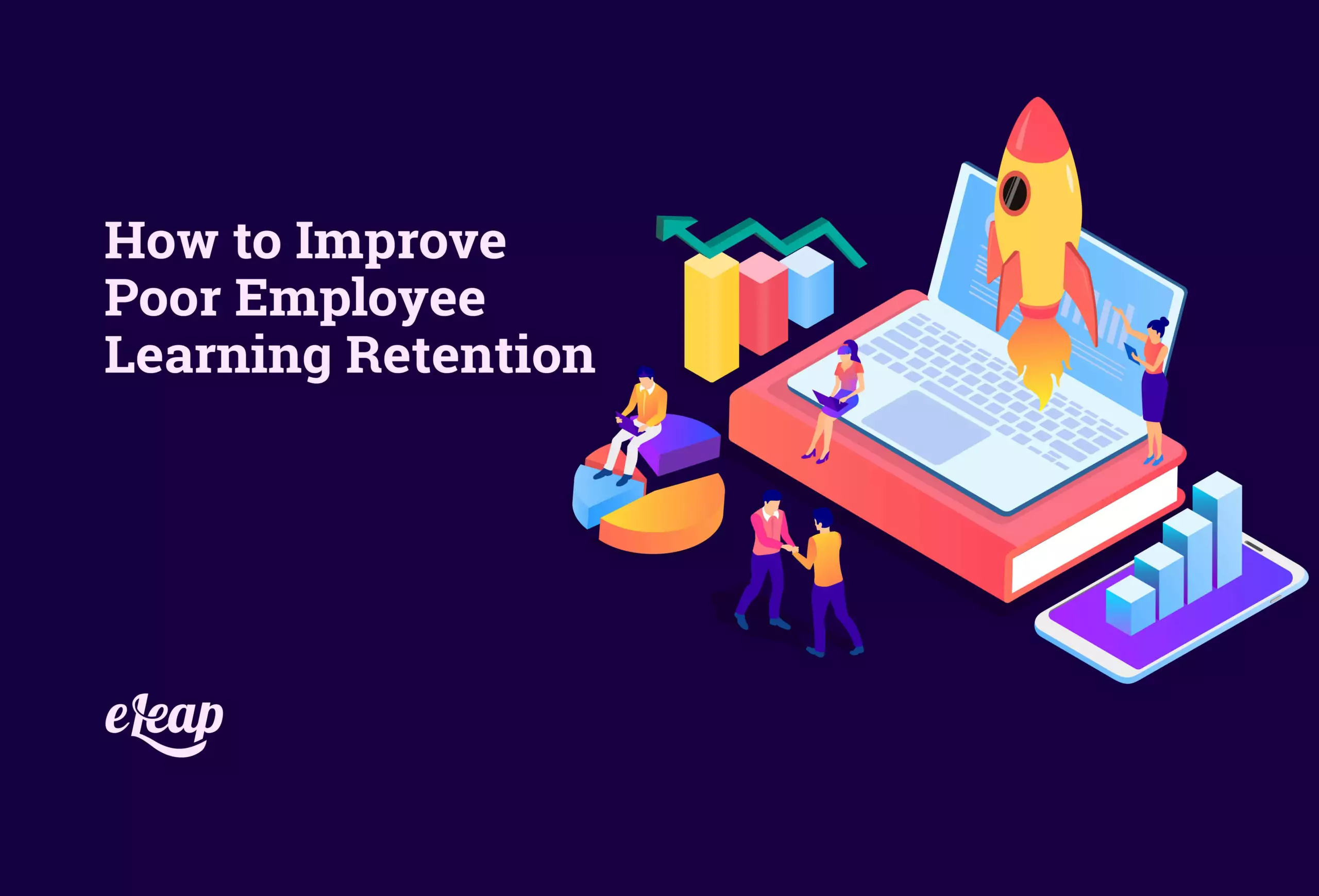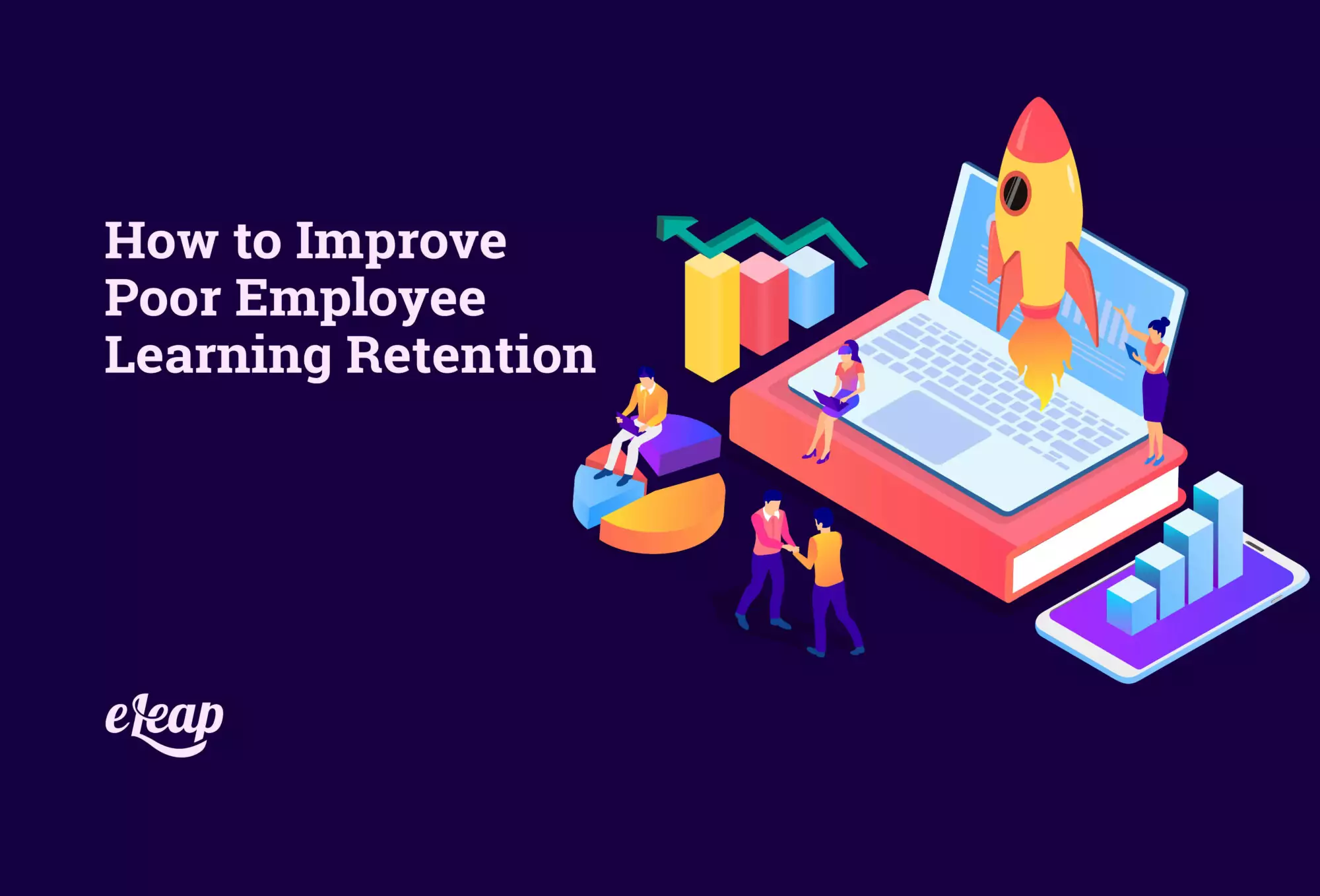How to Improve Poor Employee Learning Retention

Conventional training methods simply don’t work as efficiently as possible. There’s a reason why there have been so many technological advances in the learning world. Traditional means of learning simply aren’t effective in ensuring learners can actually retain and recall knowledge.
Investing money in a fancy learning management system and providing state-of-the-art, engaging content to your employees is something that numerous organizations are turning to as a solution. While a good LMS is quite an investment, it’s well worth it. After all, if your employees aren’t retaining information from their learning, then what’s the point? You’re simply throwing away money on training, since learners won’t be able to retain knowledge and apply what they learn to actual, on-the-job scenarios. Here, we will look at some of the reasons employees might be struggling with learning retention, and how your organization can improve on that problem.

Retention is Key, Without It, Learning is a Waste of Time
Individuals are trained to increase their skills and knowledge, benefit their personal development and, in turn, benefit organizations by contributing to their objectives with increased productivity. eLearning systems might be good within your organization, but if employees can’t actually retain the information to apply it in real-world scenarios, then the training is failing overall. No retention means no application of knowledge, which more or less equals out to your organization is throwing away money on training.
The training industry spends billions of dollars worldwide. If these expenditures do not produce optimal outcomes, it’s well worth investigating the cause and finding solutions so that training actually becomes valuable.
Review Training Methodology
The key to making sure that information learned during training is retained is ensuring it can be transformed from short-term to long-term memory. Without this process occurring, anything learned will soon be forgotten. For this transformation to occur, specific training methods need to be followed.
Consider how traditional training works. Typically, learners sit and listen to a trainer imparting knowledge. Some take notes, some fall asleep, and some pretend to listen but slowly lose interest as the training wears on. The trainer is sticking to the training program, but the training itself and the process through which it is being delivered is rigid, monotonous, and uninteresting. As a result, learners aren’t engaged, and as soon as they leave the classroom, they’ve mostly forgotten whatever it was they were told. Retention is low, and the training was largely a waste of time.
Reasons for Poor Recall
Take the example above and apply the following reasons for why this type of training leads to poor retention and recall:
- Monotonous delivery is boring, disengaging, and does not promote learning.
- Large chunks of text or the delivery of lots of information at one time makes it difficult for learners to take everything on board.
- It isn’t helpful to push large volumes of information, as it creates cognitive overload.
- A disruptive group dynamic can occur in in-person group learning settings.
- As training classes wear on, leaners become increasingly disinterested and bored.
How to Improve Retention
Address the above-mentioned problems, and you can drastically improve learner retention. But how do you go about doing so? Here are some tips:
- Knowledge retention also lies in learners understanding the value they will gain from proper training. It’s crucial for organizations to emphasize the benefits of training employees. It is important that the person being sent for training is aware of some of the benefits of paying close attention to their training, such as better employment prospects, standing out amongst peers, and recognition. Motivated trainees are more likely to retain the new knowledge because they are aware of the benefits that will accrue from learning.
- Design training programs to be focused, seamless, and linked to real-life scenarios.
- Training should never be monotonous or delivered in a boring fashion. Deliver content using multichannel, multimedia options involving active participation.
- It is better to have chunks of easily digestible information rather than long-winded explanations. Provide information in a bite-sized format so the brain can retain it better. This is known as micro-learning, which can improve focus and attention and subsequently increase retention. As a bonus, curating such course content in this manner is also simpler since the subject matter is broken down to specifics, making it easier to grasp concepts and ideas.
- Use multiple short, interconnected training sessions instead of a single long one. This will ensure the essentials are covered whilst also giving learners time to process the information and boost their retention.
- Avoid overloading content with information. The content has a higher chance of being accepted if it is specific, descriptive, and relevant. In addition to providing greater understanding, relatable narratives create lasting memories. Those who find information that relates to working situations and issues are more apt to remember it and are more receptive to it.
- Repeat content and provide refreshers for learners. During and after modules, it is necessary to repeat key knowledge points frequently. Reviewing and summarizing what has just been taught will help to reinforce learning and retention.
- Regular testing is a key factor to successful retention rates. Tests must be conducted frequently to confirm knowledge is being conveyed and should be engaging and interactive.
Well-designed and engaging training that utilizes the above points will greatly improve learner retention rates. Fortunately, all of the above factors are easily integrated into a good learning management system.
How do you actually go about integrating these features into eLearning programs? The answer lies in a learning management system and the implementation of eLearning content that can cover all of the above points to ensure learners are, well… actually learning effectively. With platforms tailored to specific needs, organizations can learn and absorb engaging content anytime, anywhere, and using any device. Training courses can actually be designed with learners in mind and intended to improve retention rather than just hoping employees walk away from a traditional training session having learned something.